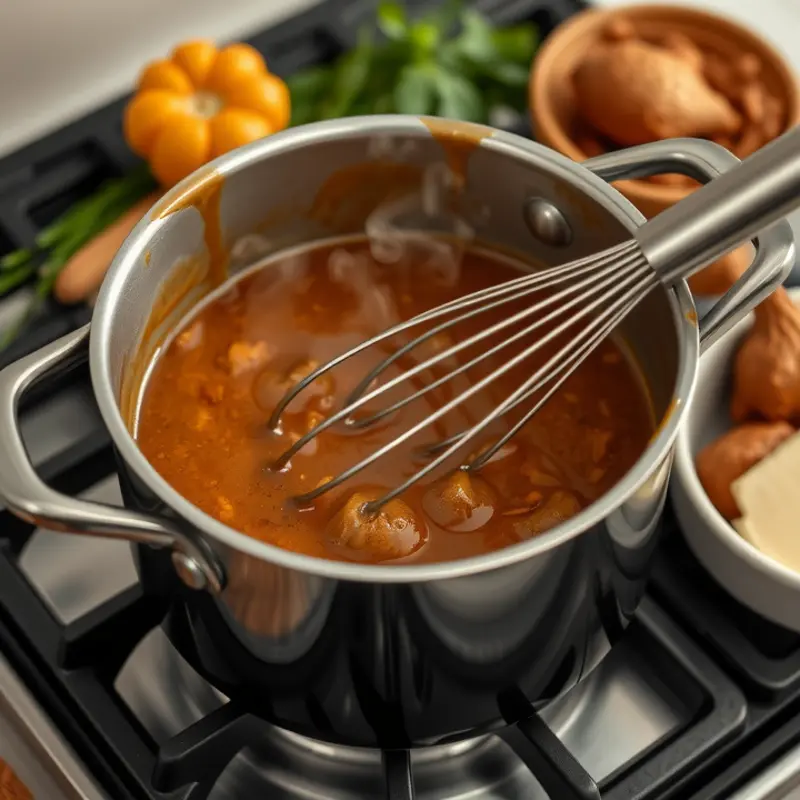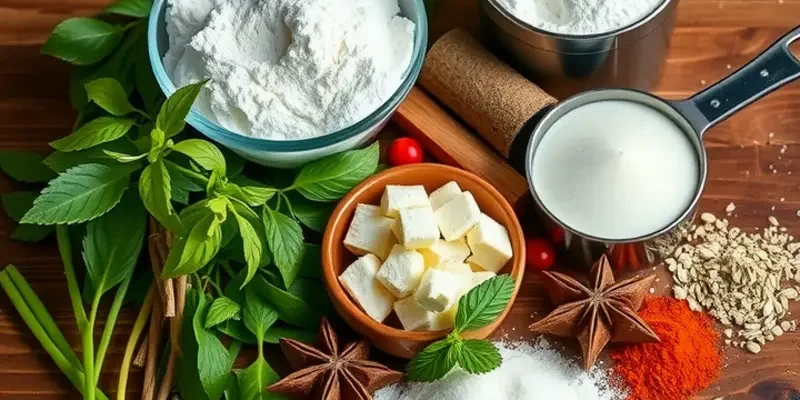Lump-free gravy is a cherished kitchen staple that elevates any meal. Whether draping over mashed potatoes or roasted meats, achieving a smooth gravy can be easier than you think. This guide offers practical, step-by-step techniques for creating velvety gravies without clumps. From choosing the right thickening agent to mastering stovetop methods, these tips will empower home cooks at any skill level to create a harmonious sauce every time.
Choosing the Right Thickener

Thickeners are the backbone of any good gravy, providing the desired viscosity and richness. Understanding the properties of each thickener can transform a good sauce into a culinary delight. Let’s dive into the most common thickeners: flour, cornstarch, and arrowroot.
Flour is a staple in many kitchens, known for its availability and versatility. It’s often the go-to thickener for classic gravies due to its consistency and ability to withstand long cooking times without breaking down. When using flour, create a roux by mixing it with fat (such as butter) over heat until golden brown. This not only eliminates raw flour taste but also helps avoid lumps. Flour imparts a slightly nutty flavor and is ideal for rich, hearty sauces. If you’re pursuing a smooth gravy, ensure a gradual addition of the liquid while whisking continuously.
While flour is traditional, cornstarch offers a useful alternative, especially for those following gluten-free diets. Cornstarch creates a more translucent and glossy sauce, and it’s known for its effective thickening power. To prevent lumps, it’s essential to make a slurry by mixing cornstarch with cold water before adding it to your hot liquid. This method allows cornstarch to fully dissolve, activating its thickening properties without clump formation. Keep in mind that cornstarch-thickened sauces tend to thin with extended cooking, so it’s best used in gravies meant for immediate serving.
If you’re looking for an alternative that performs well at lower temperatures, arrowroot might be your ideal choice. This starch is unique because it remains stable during freezing and thawing, making it perfect for gravies you plan to store in advance. Arrowroot, like cornstarch, should be mixed with a cold liquid to form a slurry before incorporating it into your sauce. It creates a clear and glossy finish but lacks the same sticking power in prolonged heat, similar to cornstarch. Its neutral flavor ensures it won’t interfere with your gravy’s seasoning profile.
Each thickener has its distinctive characteristics, offering diverse textures and finishes. The choice ultimately hinges on your gravy’s purpose and texture preference. For those implementing sustainable and eco-friendly kitchen practices, minimizing waste by storing homemade sauces correctly is crucial. Consider reading about eco-smart kitchen storage to enhance your culinary efficiency.
Understanding the nuances of these thickeners enables you to tailor your gravy to any meal, ensuring smoothness and flavor with every bite. Remember, mastering your technique based on the thickener you choose will result in a consistently lump-free gravy experience.
Perfecting the Technique: Cooking and Combining

Achieving lump-free gravy largely depends on your cooking and combining technique. A carefully managed process can turn your gravy from lumpy to luxurious. Let’s delve into the art of stovetop mixing that ensures each batch is smooth and packed with flavor.
Start by understanding the importance of temperature control. Heat can either be your best friend or your worst enemy when making gravy. It’s crucial to utilize medium heat to allow gradual thickening. Higher temperatures can lead to uneven thickening and, subsequently, lumps.
Whisking is your primary technique tool here. Invest in a good quality whisk, as it will be your trusty sidekick. Begin by mixing your thickener—notably flour or cornstarch—with a small amount of cold liquid to make a slurry. This initial step is essential for dissolving the thickener without forming clumps.
Once your slurry is ready, gently heat your stock or broth in a thick-bottomed saucepan. Make sure it’s warm but not boiling. Incorporate the slurry by pouring it in steadily as you whisk vigorously. This step combines the thickener uniformly with your liquid, preventing any pesky lumps from forming.
Remember, patience is key. Introduce the slurry in a slow, steady stream. Rushing the process won’t save time; instead, it can cause uneven integration, leading to dreaded clumps. Keep whisking, ensuring all components meld smoothly. The whisking action encourages the thickener to absorb the liquid and develop a rich, even texture.
If your gravy starts to thicken too early, don’t panic. Gradually add more stock, a few tablespoons at a time, while continuing to whisk. This method allows you to achieve your desired consistency without compromising on smoothness or flavor.
Additionally, the order of operations matters. Adding the thickener to the warm stock rather than the other way around gives you better control and less likelihood of lump formation. This particular practice should become a staple in your gravy-making routine.
Finally, consider the use of alternative techniques like immersion blending if clumps somehow persist. Carefully blend the gravy right in the pot, and watch as the smooth texture emerges.
For more tips on effective sauce preparation methods, you can check out easy sauce simmering techniques. This can provide additional insights for creating enticing sauces that accompany your special meals. By mastering these stovetop techniques, you secure your ability to craft a gravy that not only enhances dishes but also leaves a lasting impression at the dinner table.
Final words
Mastering lump-free gravy is within every home cook’s reach. By selecting the right thickener and mastering the technique of combining ingredients, you can create sauces that elevate your meals. Experiment with different thickeners and practice the whisking methods outlined in this guide. With patience and a bit of practice, you’ll impress your family and friends with perfect, velvety gravies every time.







